Anatomy Of A Cow: Understanding The Structure
A cow, also known as a bovine, belongs to the family of Bovidae. This animal is found nearly everywhere around the world and is an important source of food and milk for human consumption. Understanding the anatomy of a cow can provide farmers and viewers a better understanding and appreciation of these majestic creatures.
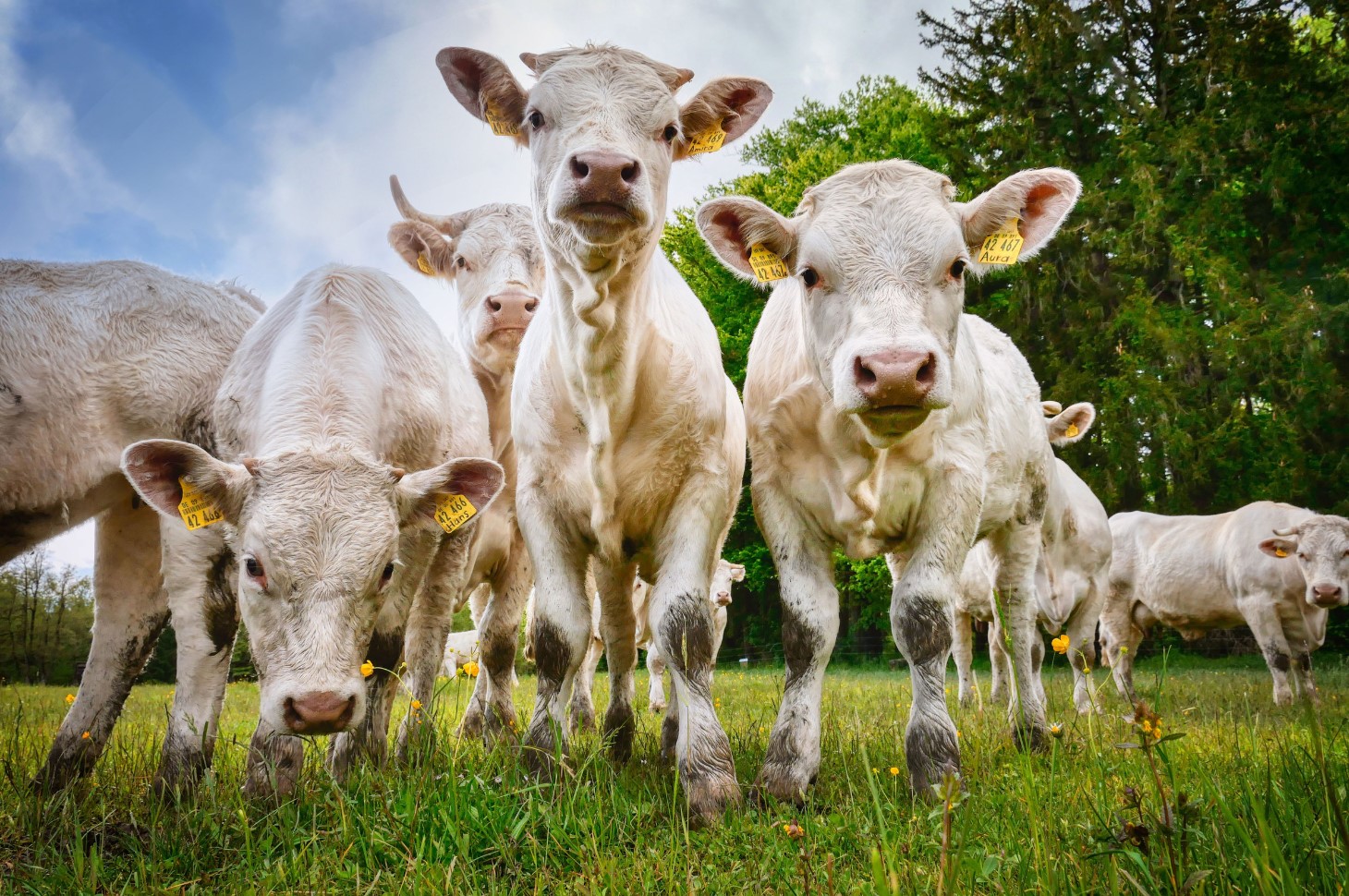
The External Anatomy of a Cow
The external anatomy of a cow is the physical appearance of the animal from the outside. A cow has a broad face with two eyes, nostrils, and ears. Its nose serves as a sense of smell, and its ears are used to locate and hear sounds. A cow’s neck is long and muscular, supporting the heavy head. It has a massive body, mainly consisting of the barrel, which is the ribcage holding the cow’s vital organs. A cow’s four limbs, tail, and udder also make up its external anatomy.
- The cow’s forelimbs or front legs have a structure similar to humans with two toes, but they are much stronger, providing support for the massive body.
- The hindlimbs or back legs have a similar skeletal structure, but the hock joins the leg with the hindquarters, allowing the cow to kick powerfully.
- The tail is a vital part of a cow’s anatomy as it plays a role in shooing away flies and other insects that may cause harm to the animal.
- The udder is a specialized organ used for milk production.
The Internal Anatomy of a Cow
The internal anatomy of a cow encompasses the organs and tissues that can’t be seen from the outside. A cow’s digestive system is complex and includes four main compartments: the rumen, reticulum, omasum, and abomasum. The rumen is the largest compartment of the cow’s stomach, where the majority of food digestion occurs. The reticulum is where initial digestion of food begins, and the omasum functions to absorb water and other nutrients from the cow’s food. The abomasum is the actual stomach, where further breakdown of food occurs.
| Organ/Structure | Function |
|---|---|
| Liver | Produces bile to help with digestion |
| Lungs | Take in oxygen and release carbon dioxide |
| Heart | Pumps blood throughout the body |
| Ovaries (in females) | Produces eggs for reproduction |
| Testes (in males) | Produces sperm for reproduction |
A cow’s anatomy is complex and fascinating, and it’s essential to understand it. Learning the internal and external anatomy can help farmers to breed and handle their cows effectively, which will ultimately lead to healthy cows and increased milk and meat production. Overall, cows are an essential part of our food supply chain and understanding their anatomy is crucial for our survival.
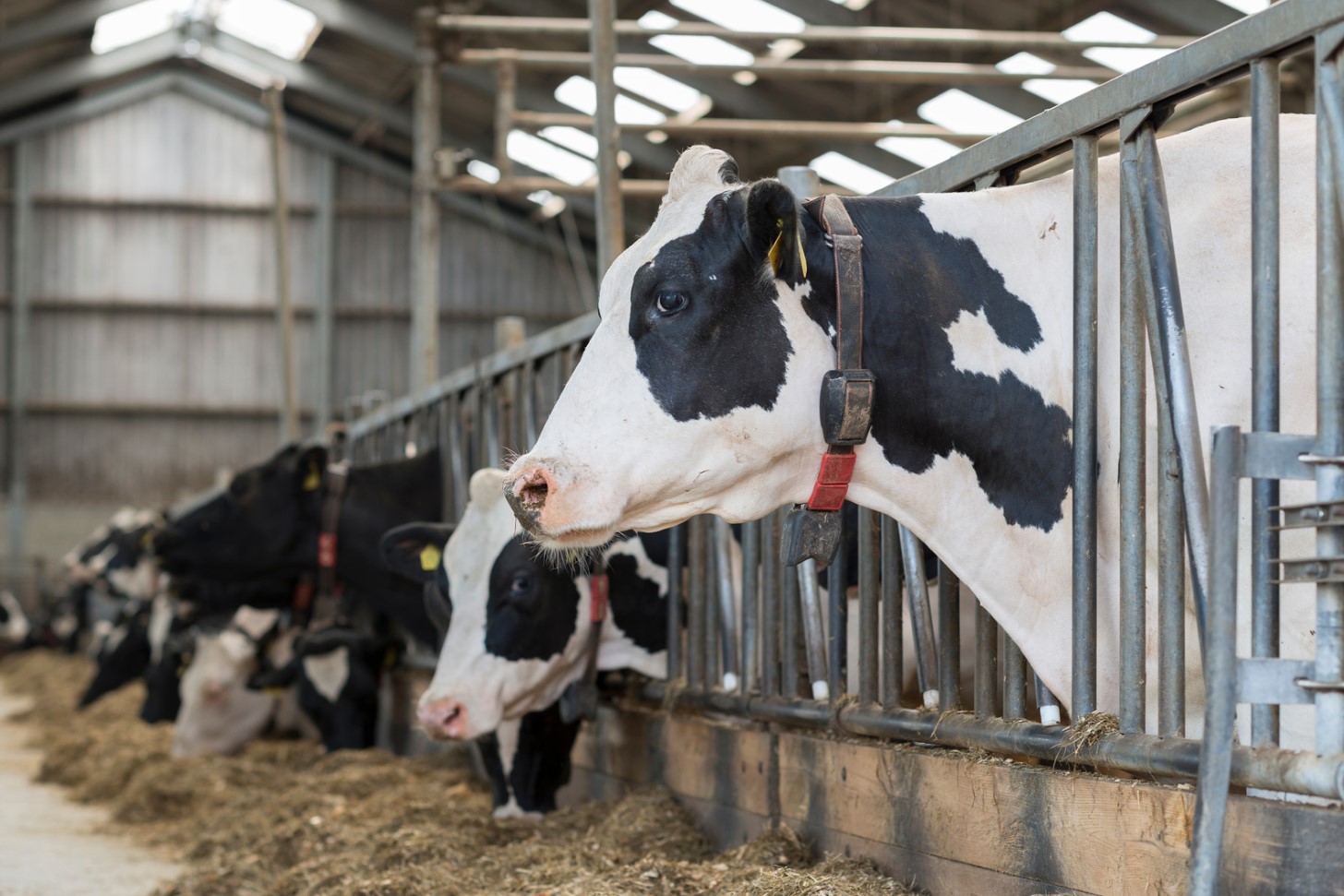
Cow Breeds Around The World: A Comprehensive Guide
When it comes to cows, there are a plethora of breeds around the world. Each breed is unique, with different physical characteristics, temperaments, and uses. Here is a comprehensive guide to some of the most popular cow breeds across the globe.
1. Holstein
Arguably the most well-known cow breed, the Holstein is primarily bred for milk production. Their black and white spotted coat is characteristic of the breed, and they are easily recognized amongst other breeds. Holsteins are docile and gentle, making them a popular choice for dairy farmers.
2. Angus
The Angus breed originated in Scotland and has since gained popularity around the world. They are primarily bred for meat production, and farmers favor them for their hardiness, easy calving, and good meat quality. Black is the most common color for Angus, but red Angus also exist.
3. Hereford
The Hereford is another popular beef breed, known for their reddish-brown coat and white face. They are adaptable to different climates and have a docile temperament, making them a good choice for ranchers. Herefords are bred for both meat and milk production.
- 4. Jersey
- 5. Brahman
- 6. Simmental
| Breed Name | Country of Origin | Primary Use |
|---|---|---|
| Jersey | Isle of Jersey | Milk production |
| Brahman | United States | Meat and draft power |
| Simmental | Switzerland | Meat production |
The Jersey is a smaller breed than the Holstein, and they are also primarily bred for milk production. They are known for their high butterfat content in their milk, which makes them a popular choice for cheesemakers. Brahman cows are known for their hardiness and adaptability to hot and humid climates. They are bred for both meat and draft power, making them useful to farmers in many ways. The Simmental breed originated in Switzerland and is known for their fast growth, good meat quality, and docile temperament.
These are just a few of the many cow breeds around the world. Each breed has unique characteristics that make them useful to farmers and ranchers in different ways. Understanding the differences between breeds can help farmers choose the best cows for their specific needs and ultimately lead to more successful farming practices.
History Of Cows: From Domestication To Modern-Day Farming
Cows have played a significant role in human history. These gentle bovines have been domesticated for thousands of years and have become an important livestock animal. Throughout history, the relationship between humans and cows has evolved, from being worshipped as sacred animals to being raised for their meat and milk. Here is a brief history of cows; how they were domesticated and how they have become one of the most valuable assets in modern-day farming.
The Domestication of Cows
The domestication of cows began around 8000 BC, in what is now Turkey and Iran. Originally, cows were domesticated for milk and their ability to work as draft animals. These animals provided a reliable source of food and transportation for early human civilizations, and quickly became an integral part of their way of life. Over time, cows spread throughout the world, with different breeds adapting to the local climate and conditions.
The Role of Cows in Modern-Day Farming
Today, cows are raised for both milk and meat. The dairy industry, in particular, has become a vital part of the global economy. Milk and dairy products provide a significant portion of the world’s protein and are a staple food in many cultures. Cows are also raised for meat, leather, and other by-products. In some parts of the world, cows are still used as draft animals, providing an essential source of labor.
- Benefits of Cows
Aside from their economic importance, cows also play a vital role in sustainable agriculture. Cows provide manure, which is used to fertilize crops, reducing the need for chemical fertilizers. Their grazing habits can also help to keep grasslands healthy and productive. Additionally, cows are excellent at converting low-quality food, such as grass, into high-quality protein, making them an efficient and sustainable source of food.
| Cow Breeds Around the World | Origin | Use |
|---|---|---|
| Angus | Scotland | Meat |
| Jersey | Channel Islands | Milk |
| Holstein | Netherlands/Germany | Milk |
| Brahman | United States | Meat/Draft |
In conclusion, cows have come a long way since their domestication thousands of years ago. They have become an essential part of modern-day farming and play a vital role in sustainable agriculture. From providing milk and meat to fertilizing crops and keeping grasslands healthy, cows continue to contribute to our way of life in countless ways. Their history is a testament to the enduring and valuable relationship between humans and animals.
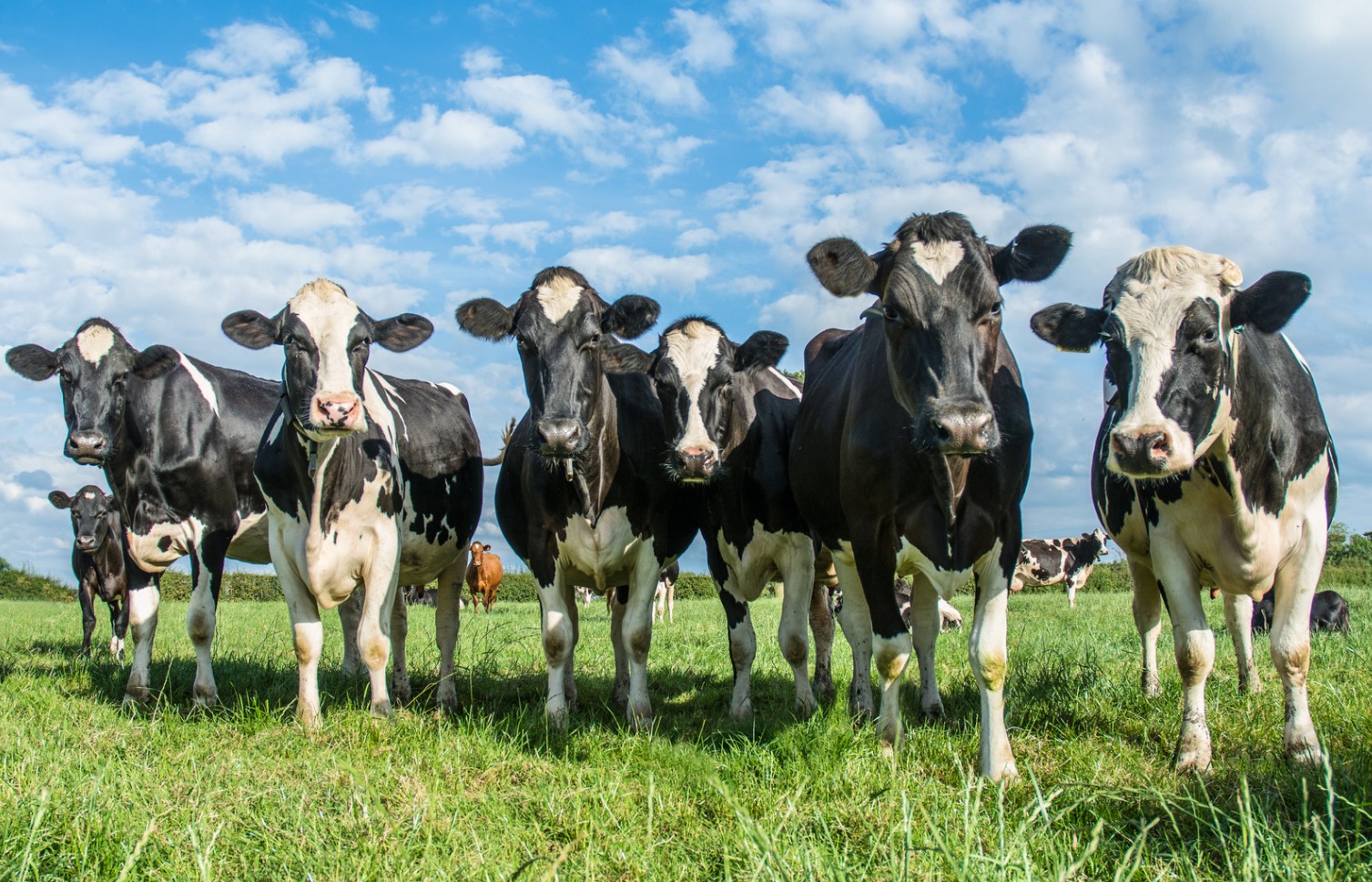
What Makes Cows Different From Other Livestock?
When it comes to livestock, cows are among the most common and important animals in agriculture. However, what makes cows different from other livestock? For starters, cows are part of the bovine family, which includes buffalo, bison, and yaks. One of the most notable differences between cows and other livestock animals is their size. Cows can weigh over a thousand pounds, making them much larger than pigs, goats, or sheep.
Another difference is the role that cows play in agriculture. Dairy cows, in particular, are essential for producing milk, cheese, and other dairy products. Meanwhile, beef cows are raised for their meat and by-products like leather and fertilizer. In contrast, other livestock animals like pigs and chickens are primarily raised for their meat alone.
- Overall, cows are a unique and essential part of the agricultural landscape. From their size to their role in food production, there are many factors that set them apart from other livestock animals.
| Cow | Pig | Goat | Sheep |
|---|---|---|---|
| Larger size | Smaller size | Smaller size | Smaller size |
| Mainly raised for meat and dairy products | Mainly raised for meat | Mainly raised for milk and meat | Mainly raised for wool and meat |
| Part of the bovine family | Part of the porcine family | Part of the caprine family | Part of the ovine family |
Despite these differences, all livestock animals play an important role in agriculture and food production. By understanding the unique qualities of each type of animal, we can better appreciate the hard work and dedication that goes into farming and raising animals for food.
Exploring The Benefits Of Cow Milk And Meat
Cows have long been an integral part of human lives, with their meat and milk being staple foods in many countries. Cow milk and meat provide various nutritional benefits, making them important in a balanced diet. In this article, we will explore the benefits of consuming cow milk and meat and how they contribute to our well-being.
Cow Milk: Cow milk is a good source of essential nutrients such as protein, calcium, potassium, and vitamin D. Protein is essential for maintaining and repairing muscles, while calcium and potassium are necessary for healthy bones and teeth. Vitamin D helps the body absorb calcium, which makes cow milk a good source of both nutrients. Additionally, cow milk also contains certain fatty acids that have anti-inflammatory properties and can reduce the risk of heart disease and type 2 diabetes.
Cow Meat: Cow meat, commonly known as beef, is a good source of protein, vitamin B12, and iron. Protein is essential for building and repairing muscle tissue, while vitamin B12 is necessary for the formation of blood cells and maintaining a healthy nervous system. Iron is necessary for the production of red blood cells, which transport oxygen throughout the body. Together, these nutrients can help prevent anemia and increase energy levels. Cow meat is also a good source of zinc and selenium, which are important for maintaining a healthy immune system.
- Benefits of Consuming Cow Milk and Meat:
- Provides essential nutrients such as protein, calcium, potassium, vitamin D, vitamin B12, iron, zinc, and selenium.
- Helps maintain and repair muscles, bones, and teeth.
- Can reduce the risk of heart disease, type 2 diabetes, and anemia.
- Good source of fatty acids with anti-inflammatory properties.
- Good source of nutrients that are essential for a healthy immune system and nervous system.
In conclusion, cow milk and meat offer many nutritional benefits that are necessary for a healthy diet. From protein to calcium, vitamin D to iron, cow milk and meat provide many essential nutrients that can boost our overall well-being. It is important to consume them in moderation and as a part of a balanced diet to reap their full benefits.
Caring For Cows: Tips For Proper Feeding And Grooming
Cows are important dairy and meat-producing animals that require proper care to ensure their health and productivity. If you are a farmer or livestock owner, feeding and grooming your cows properly is crucial in keeping them healthy and yielding good results. Below are some of the essential tips for caring for cows.
- Feeding: Cows are herbivores and therefore require a diet rich in fibrous vegetation. Provide your cows with quality grass hay or silage, which should make up the bulk of their diet. Supplement this with other feeds such as grains and protein-rich supplements. Ensure that your cows always have access to freshwater and clean feeding troughs.
- Grooming: Grooming cows involves maintaining their hygiene and physical appearance. Brushing their coats regularly helps keep their skin healthy and promotes better blood circulation. Shearing your cows at least once a year is also recommended. You should also keep cow barns and milking parlors clean to prevent the spread of infection and disease.
- Healthcare: Regular health checks and vaccination schedules are essential in maintaining the overall health of your cows. Hire a veterinarian to carry out routine checks and procedures such as deworming and dehorning. Immediately consult your vet if you notice any signs of illness in your cows such as loss of appetite, changes in bowel movements, or any unusual discharge.
Remember, healthy cows are happy cows, and happy cows translate to increased milk and meat production. Proper feeding, grooming, and healthcare are key to keeping cows healthy and productive, which directly impacts your bottom line. So, always take care of your cows and give them the best possible care they need.
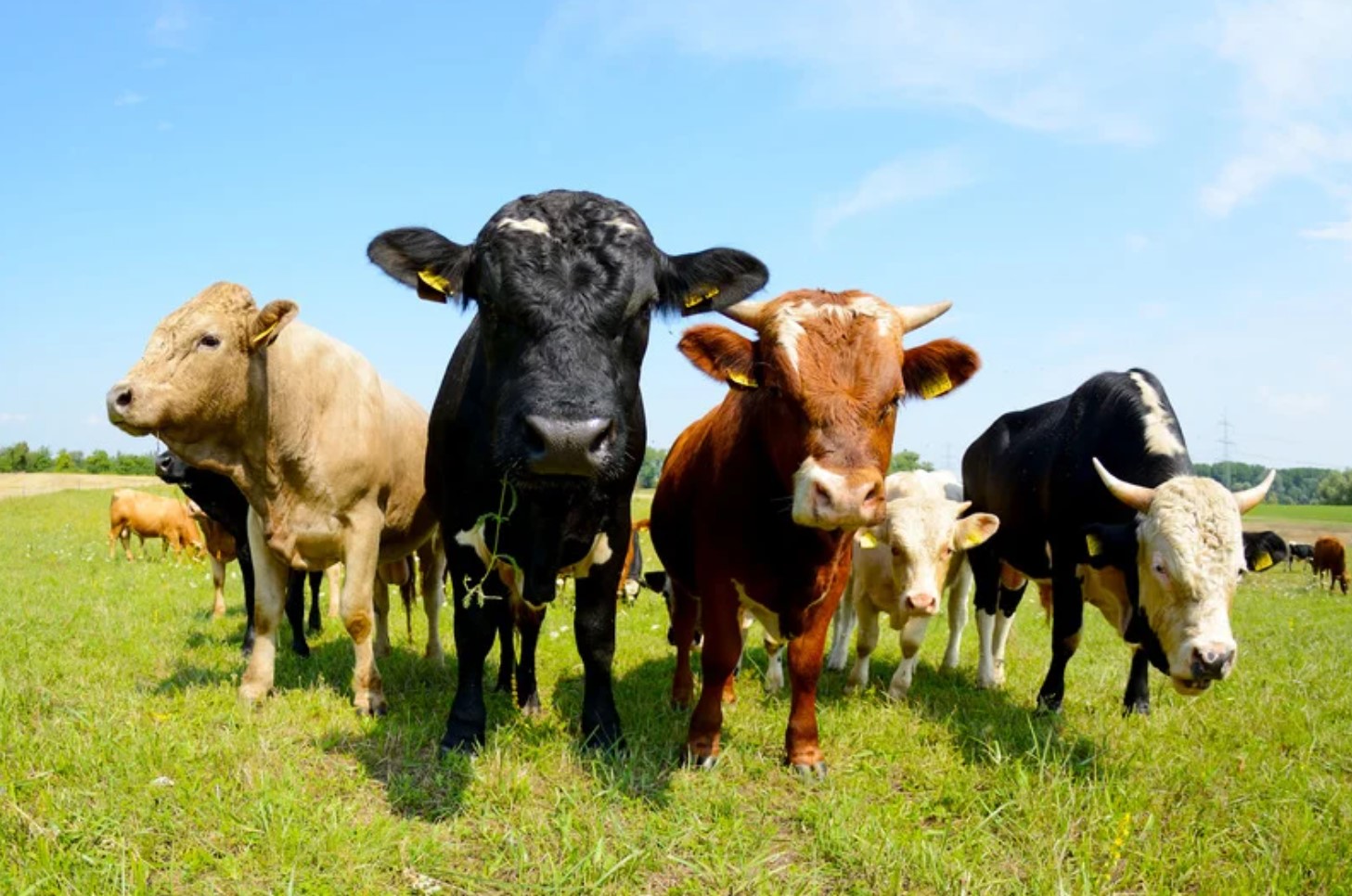
Importance Of Cow Agriculture İn The Global Economy
Cow agriculture plays an important role in the global economy. The dairy and meat products derived from cows are staple foods that are consumed by millions of people worldwide. In addition to being a source of food, cows also provide leather, manure, and fuel. The cattle industry also provides employment opportunities for millions of people, including farmers, veterinarians, and meat processors.
Cows are bred for meat and milk production, with the majority of cows being raised for beef. However, some cows are raised specifically for dairy purposes. The top milk-producing countries in the world include the United States, India, and China. Dairy products from cows, such as cheese and yogurt, are popular food items and contribute significantly to global trade.
With the increasing demand for food and other resources, cow agriculture is becoming more important in the global economy. Governments are investing in the industry to ensure that it can keep up with the growing demand. Some of the challenges facing the industry include climate change, diseases, and economic fluctuations. The use of technology and sustainable practices can help to mitigate these challenges and ensure the industry’s continued growth.
| Countries with the highest number of cows | Number of cows |
|---|---|
| India | 300 million |
| Brazil | 215 million |
| China | 96 million |
| United States | 94 million |
| Argentina | 50 million |
In conclusion, the cow agriculture industry is an important part of the global economy. It provides food, jobs, and resources that are essential for many countries. With the growing demand for food, the industry will continue to play a vital role in ensuring food security and economic stability. It is important for governments, farmers, and stakeholders to work together to address the challenges facing the industry and ensure its continued growth.
The Future Of Cow Farming: Technological Advancements And Sustainable Practices
Cow farming has been an essential part of agricultural practices for centuries. Over time, there have been significant changes in how farmers raise cattle with the help of technology. It is necessary to explore the future of cow farming, considering technological advancements and sustainable practices. In recent years, there has been a considerable shift from traditional cow farming to more advanced methods that help maintain the environment and create a better living standard for cows.
Technological advancements have contributed immensely to cow farming. Farmers now use various technological tools to track the health and well-being of their cows, monitor their food intake, and detect diseases. The use of drones for monitoring pastures, robotic milking systems, and automated feeding and cleaning systems help reduce the workload and improve the efficiency of the farm. Additionally, with the help of artificial intelligence (AI) systems, farming practices have become more precise and data-driven.
- One sustainable practice that farmers are adopting is organic farming. Organic farming involves using natural methods to produce cow feed and maintain the environment.
- Cow farmers are also exploring alternative energy sources like solar panels, wind turbines, and biogas digesters to power their farms and reduce their carbon footprint.
- There is an increasing interest in preserving biodiversity and natural resources. Farmers are now planting cover crops to protect soil and water quality, thereby improving the land’s productivity and reducing greenhouse gas emissions.
Overall, the future of cow farming lies in sustainable practices and technological advancements. Farmers are now more aware of their impact on the environment and the importance of preserving natural resources for future generations. As such, they are beginning to adopt more eco-friendly farming practices, reduce their carbon footprint, and prioritize the well-being of their cows. With the continued development of technology and growing public interest in sustainable practices, the future looks bright for cow farming.
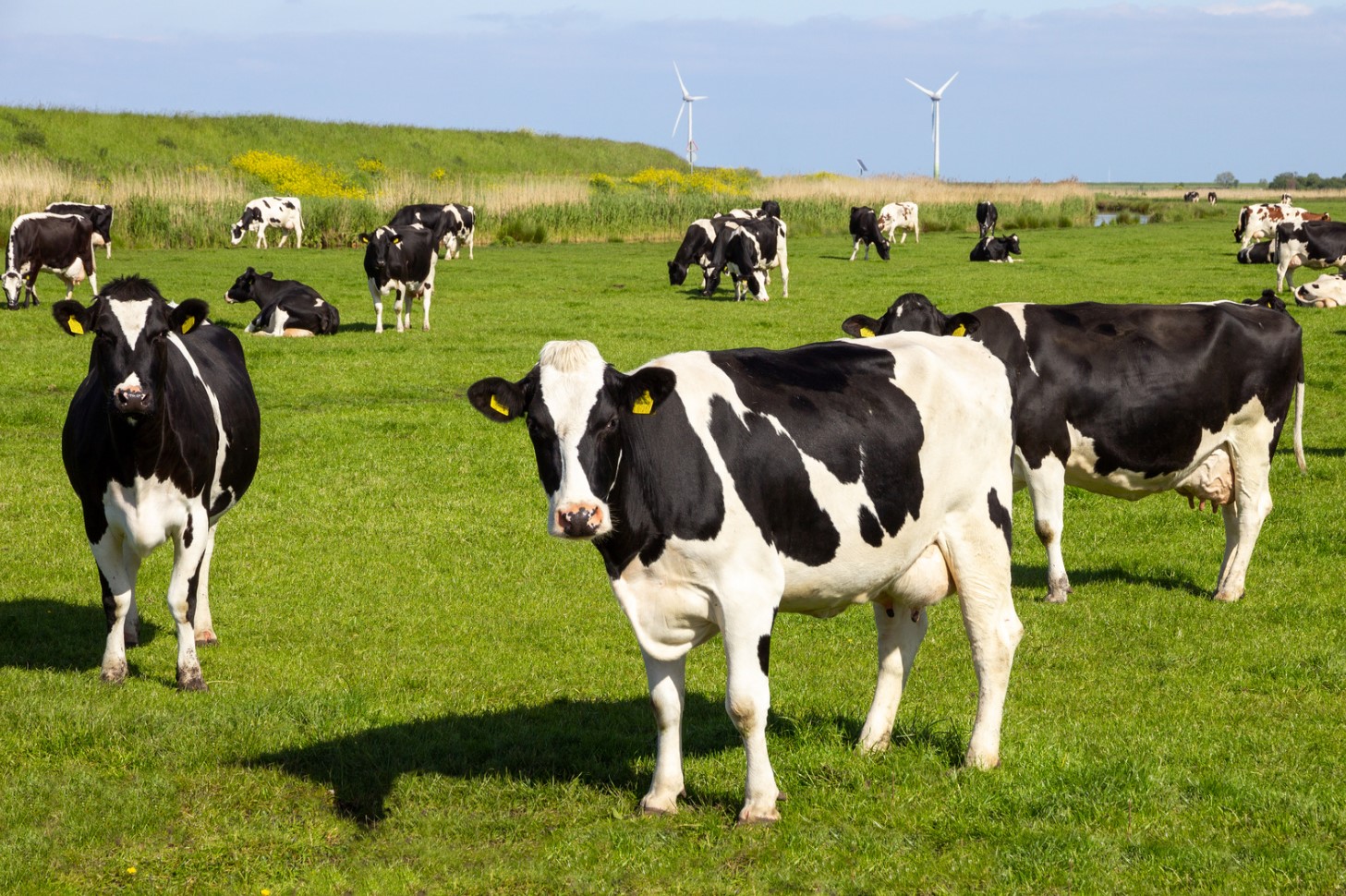
From Bull To Steer: Understanding The Differences İn Cattle Gender
The cattle industry plays a vital role in the agricultural sector. To those working in this industry, understanding the differences in cattle gender is crucial in expanding their knowledge on animal husbandry. Breeding cattle and nurturing them through different stages of life require a deeper understanding of their anatomy, behavior, and needs. In this blog post, we will focus on the differences between bull and steer, two of the most common genders of cattle.
In terms of anatomy, bulls and steers share similarities as they both have horns and are typically larger in size than their female counterparts. Bulls have a distinct hump on their backs that gives them a more muscular appearance compared to steers. Additionally, bulls have reproductive organs, while steers do not. The castration process, which involves the removal of the testes, is commonly done to reduce aggression and unwanted breeding in bulls. This leads us to the main difference between bull and steer, their ability to reproduce.
A bull is an intact male bovine that is capable of breeding and impregnating female cows. Meanwhile, a steer is a castrated bull, which means their testicles have been removed, making them incapable of reproduction. This makes them more docile and easier to handle. Steers are often preferred in the meat industry as they produce a better quality of meat than bulls. The absence of the male hormone testosterone in steers results in meat with a finer texture and milder flavor.
| Bull | Steer | |
|---|---|---|
| Ability to Reproduce | Yes | No |
| Behavior | Aggressive | Docile |
| Size | Larger | Smaller |
| Meat Quality | Lower | Higher |
Understanding the differences in cattle gender is vital for those working in the cattle industry. As discussed, the main differences between a bull and a steer are their ability to reproduce and their meat quality. While bulls are suitable for breeding, steer produce meat of higher quality. In the end, the decision on whether to keep bulls or steers will depend on the role they play in the operation, whether it’s for breeding or meat production.
Diseases Commonly Affecting Cows And How To Prevent Them
Cows are generally healthy animals, but like all living things, they can suffer from diseases. In fact, there are a variety of commonly occurring ailments that can affect cows, and these illnesses can seriously impact their health and productivity. In this blog post, we will discuss some of the most common diseases that afflict cows and offer tips on how to prevent them.
-
- Mastitis
Mastitis is an infection that is characterized by inflammation of a cow’s mammary gland. This condition can lead to a decrease in milk production, as well as pain and discomfort for the cow. Mastitis is often caused by bacterial infections, which can be spread between cows through contaminated milking machinery or improper milking techniques. It can be prevented by ensuring that cows are milked cleanly and regularly, and by using proper milking equipment that is regularly disinfected.
-
- Bovine Viral Diarrhea
Bovine Viral Diarrhea, or BVD, is a viral infection that can cause a variety of symptoms in cows, including fever, diarrhea, and respiratory problems. BVD is highly contagious and can be spread through contact with infected animals, as well as through bodily fluids, such as saliva or urine. The best way to prevent BVD is to implement a vaccination program, as well as to practice good hygiene and management practices, such as quarantining new animals and keeping the barn and feeding areas clean.
-
- Foot and Mouth Disease
Foot and Mouth Disease is a viral disease that affects cows, pigs, and other animals. It is highly contagious and can be spread through contact with infected animals or contaminated objects, such as equipment or clothing. Symptoms of Foot and Mouth Disease include fever, blisters or ulcers on the feet, mouth, or tongue, and lameness. This disease can have a significant impact on the livestock industry, resulting in decreased productivity and significant economic losses. Prevention measures for this disease include practicing good hygiene, quarantining infected animals, and implementing strict controls on animal movement.
There are many other diseases that can afflict cows, including Johne’s Disease, Bovine Tuberculosis, and Brucellosis. Each of these diseases can be prevented through proper management, hygiene, and veterinary care. By implementing a comprehensive disease prevention program, farmers can protect their cows, as well as their own livelihoods.
How Climate Change Affects Cow Farming: Impacts On Health And Production
Climate change has become a significant challenge for livestock farmers worldwide. As the temperature rises, farmers are facing multiple impacts on cow farming. In this blog post, we will explore How Climate Change Affects Cow Farming: Impacts On Health And Production, and what measures farmers can take to mitigate these impacts.
Impacts On Cow Health: High temperatures and humidity can lead to heat stress in cows, causing decreased milk production, reduced fertility, and lower weight gains. Studies show that heat stress can also increase the risk of diseases in cows, such as mastitis, respiratory issues, and lameness.
Effects On Production: Climate change also affects the forage production for cows. Changes in temperature and precipitation patterns result in variations in forage quantity and quality, which, in turn, affects milk and meat production. The rising temperature also creates a favorable environment for parasites and diseases that decrease the overall production of cows.
- Install cooling systems in the barns, such as fans and sprinkler systems, to reduce the impact of heat stress on cows.
- Plant drought-resistant forage crops that require less water and are better adapted to changing climatic conditions.
- Adopt better manure management practices to control greenhouse gas emissions (GHG) and nutrient pollution.
- Use precision agriculture technologies to optimize the use of farm inputs such as water, fertilizers, and pesticides, which can reduce GHG emissions.
Cow farming can be sustainable if farmers adopt these best practices to mitigate the impact of climate change. As the planet’s temperature continues to rise, farmers must continue to adjust their practices to ensure the health and production of cows in increasingly challenging conditions.
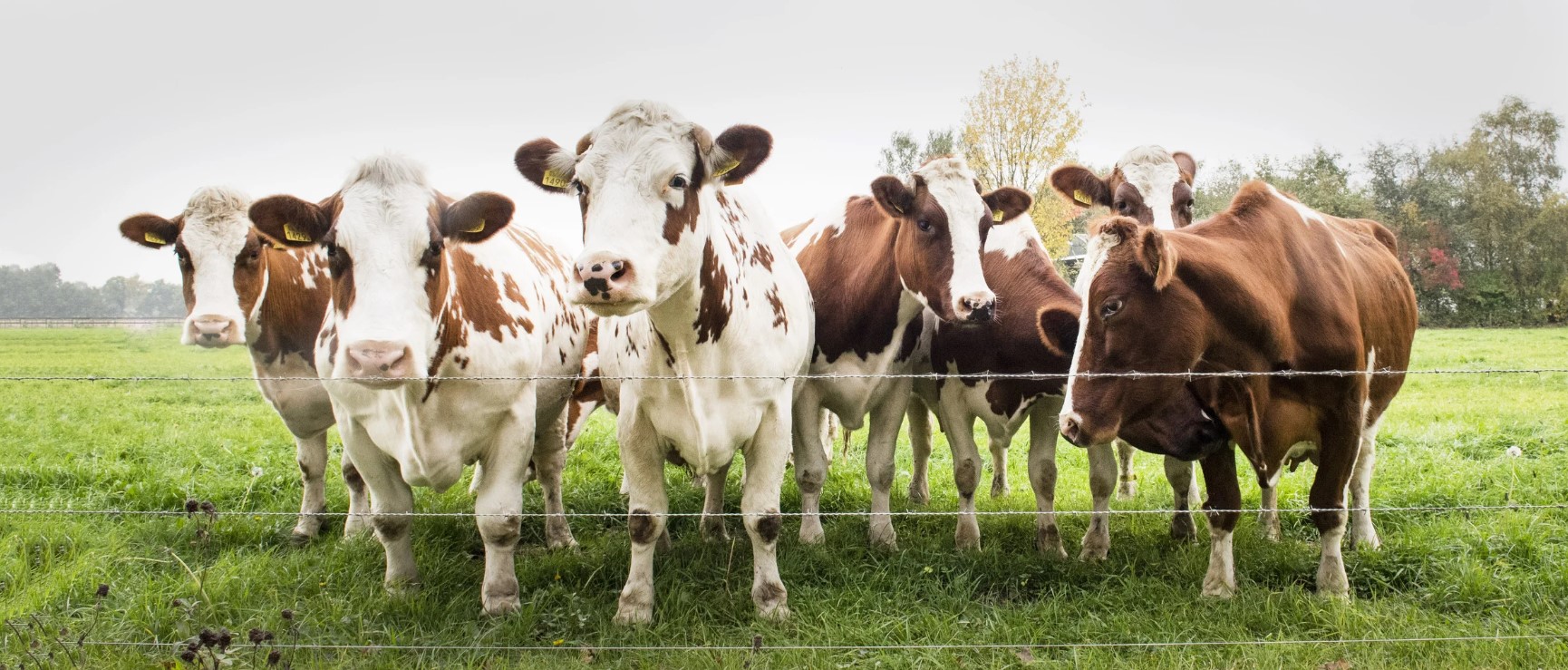
The Role Of Cows İn Culture And Religion Around The World
Cows have played an important role in various cultures and religions around the world. These gentle creatures are considered sacred in Hinduism and are worshipped as the embodiment of the divine and maternal energy. Cow slaughter is prohibited in India, where the cow is also considered a symbol of wealth and prosperity. In many other cultures, cows have been used for food, transportation, and as a source of clothing and shelter. In this blog post, we will explore the role of cows in culture and religion around the world.
In Ancient Egypt, cows were revered for their maternal nature and were considered to be goddesses. The goddess Hathor, who was portrayed with the head of a cow, was associated with fertility, motherhood, and beauty. The ancient Egyptians also used cows as a source of food and milk, and their dung was considered a valuable fuel for cooking and heating.
- In Hinduism, cows are considered sacred animals and are worshipped as the embodiment of the divine and maternal energy.
- In Buddhism, cows are associated with the notion of sacrifice, as exemplified by the story of the Bodhisattva who sacrificed his body to feed a tigress and her cubs.
- In Christianity, cows and other animals are often depicted in the Nativity scene, as a reminder of the humble birth of Jesus in a stable, surrounded by farm animals.
In some African cultures, cows are seen as a symbol of wealth, and owning a large herd of cows is considered a sign of prosperity and social status. Cows are also used for traditional dance performances, where they are adorned with colorful beads and bells.
| Country | Role of cows |
|---|---|
| India | Sacred animals, source of milk and dung fuel, symbol of wealth |
| China | Used for meat, milk, and transportation |
| Africa | Symbol of wealth and prosperity, used in traditional dance performances |
In conclusion, the role of cows in culture and religion around the world is diverse and multifaceted. From being worshipped as sacred animals in Hinduism to being used as a source of food and wealth in Africa, cows have played an important role in shaping human culture and civilization. As we move towards a more sustainable future, it is important to balance our economic needs with the ethical considerations of animal welfare and environmental sustainability.
Famous Cow Breeds And Their Contributions To Agriculture
Cows are one of the most valuable and beneficial livestock animals on the planet. They have been domesticated for thousands of years and have played an essential role in agriculture and human livelihoods. There are hundreds of cow breeds worldwide, each with unique physical and behavioral characteristics. Here, we will take a closer look at some of the most famous cow breeds and their significant contributions to agriculture.
1. Holstein
The Holstein cow breed is known for its high milk production and is considered the most popular dairy cow in the world. These cows are originally from the Netherlands and can produce up to 9 gallons of milk per day- more than any other breed. Holsteins are usually black and white and have a friendly temperament, making them easy to handle.
2. Angus
The Angus cow breed is one of the most popular beef cattle breeds in the world. Angus cows are primarily black, and their meat is considered to be of exceptional quality. They are known for their easy calving and adaptability to various environmental conditions. Angus cows are low-maintenance and have a docile temperament.
3. Brahman
The Brahman cow breed is best known for its adaptability to hot and humid climates, making them very popular in tropical regions. They have a prominent hump on their back, which stores fat and provides them with energy during long treks. Brahman cows are also resistant to pests and diseases, which makes them easy to manage.
| Breed | Contribution |
|---|---|
| Holstein | High milk production |
| Angus | High-quality beef |
| Brahman | Adaptability to hot and humid climates |
These are just a few famous cow breeds that have made significant contributions to agriculture. Cows have been bred to meet specific needs, and each breed brings unique qualities that make them suitable for different farming practices. Understanding cow breeds and their diverse characteristics is critical for modern-day farmers and agriculture professionals.
What Are Dairy Cows And Why Are They Important?
Dairy cows, as the name suggests, are cows that are bred specifically for milk production. They are known for their high milk yield, docile temperament, and adaptability to different environmental conditions.
Why are dairy cows important?
Dairy cows play a crucial role in the dairy industry, which is a major contributor to the global economy. The dairy industry provides employment opportunities to millions of people around the world and generates billions of dollars in revenue each year. In addition, dairy products such as milk, cheese, butter, and yogurt are staple foods that are consumed worldwide. These products are not only a rich source of essential nutrients such as calcium, protein, and vitamins, but they are also an important source of income for millions of farmers around the world.
Types of dairy cows
There are different breeds of dairy cows, each with its own characteristics and milk yield. Some of the most popular breeds are:
- Holstein
- Jersey
- Guernsey
- Ayrshire
- Brown Swiss
The life of a dairy cow
Dairy cows start their life on a dairy farm where they are bred and reared for milk production. They are usually milked twice a day and consume a diet that is carefully formulated to provide them with the nutrients they need. Once a cow’s milk yield drops, she is typically sold for beef production. The average lifespan of a dairy cow is around 5-7 years, although some cows can live for much longer.
The ethics of dairy farming
The dairy industry has been criticized in recent years for its treatment of animals, particularly in intensive farming operations. As consumers become more aware of animal welfare issues, there is a growing demand for ethically sourced dairy products. Many dairy farmers are now adopting more sustainable and humane farming practices in response to this demand.
In conclusion
Dairy cows are an essential part of the dairy industry, which is an important contributor to the global economy. While there are concerns about the treatment of dairy cows, many farmers are adopting more sustainable and humane farming practices in response to consumer demand. Dairy products are consumed worldwide and are an important source of income for millions of farmers around the world.
Ethics Of Cow Farming: Balancing Animal Welfare And Economic Demands
Ethics of cow farming has been an ongoing debate for decades, with arguments coming from all directions. Some people believe that the welfare of the animal is the most important factor to consider, while others believe in prioritizing the economic gains that come from raising cows. However, it begs the question: can animal welfare and economic demands coexist in the cow farming industry?
A significant part of the argument is whether or not cows should be allowed to graze freely in pastures or kept in confined spaces for mass production. Proponents of free-range farming argue that it allows cows to express natural behaviors, such as grazing, herd formation, and socialization, which are essential to their well-being. On the other hand, factory farming supporters claim that confining cows can lead to more efficient space utilization and reduces the risks of diseases spreading.
- In addition to the grazing issue, critics of cow farming often raise concerns about the use of hormones, antibiotics, and other additives to enhance cow milk and meat production.
- The use of antibiotics in particular has been hotly debated over the years. Some people worry that the overuse of antibiotics in cow farming can promote antimicrobial resistance, which could be detrimental to both animal and human health in the long run.
- Proponents of cow farming, however, argue that the use of antibiotics is necessary for maintaining the good health of cows and thereby ensuring the safety and quality of their products.
Another aspect of cow farming that sparks controversy is the practice of separating calves from their mothers soon after birth. Some people argue that this can have negative psychological impacts on both cows and calves, while others believe that it is necessary for proper calf rearing and prevents infections from spreading.
| Pros | Cons |
|---|---|
|
|
In conclusion, the ethics of cow farming is a complex issue that requires a balance between animal welfare and economic demands. It is possible to achieve this balance by adopting sustainable and humane farming practices that prioritize the well-being of cows and provide economic benefits to farmers.